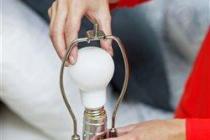Need readers? Here are key facts to know before you buy reading glasses

(BPT) – Your 40th birthday was a while ago and since then, print looks like it’s been getting smaller. Moving printed matter farther from your eyes to bring it into focus worked for a while, but now you’re stretching your arm as far as it will reach. Since that arm’s not going to get any longer, it may be time to get some reading glasses.
A visit to an eye doctor can confirm if you’re experiencing presbyopia, a natural side-effect of growing older. As you age, the lens inside our eye loses flexibility and becomes less effective at helping you focus. Most people will develop presbyopia in their early to mid-40s; in fact, the number of people who wear corrective lenses spikes in the 40s, and 93 percent of people ages 65-75 wear corrective lenses, according to the Vision Impact Institute.
Of course knowing you’re far from alone in your need for reading glasses might not make you feel any better about wearing them. You may be tempted to sneak into the local pharmacy, grab the first pair of readers you see and hope you can pay for them and get out of there before anyone you know sees you. But don’t be hasty in your choice of reading glasses. A recent study by Foster Grant indicates the readers you wear can have a significant impact on your productivity and quality of life.
Here are some important facts to help you choose reading glasses that are right for you:
* Reading glasses generally offer magnification between +1.00 and +2.75, in increasing increments of .25.
* You can buy readers without a prescription from a pharmacy, department store, vision center, discount store or online.
* Try to purchase the lowest level of magnification that works for you; a magnification that is too strong may cause headaches and eye strain.
* Long gone are the days when all reading glasses looked like something your granny would wear. Today, brands like Foster Grant have reading glass designs in a variety of shapes, colors, sizes and styles to flatter any facial structure and appeal to virtually every preference.
* While readers help you focus on printed matter, they can actually make it difficult to see other things, such as a computer screen or the face of someone you’re talking to. In order to refocus your eyes from printed material to something else, you have to remove single-focus readers or peer over the lenses.
A study by FGX International, the owner of the Foster Grant brand, found nearly half of people 40 and older who wear single-focus reading glasses take them off 10 or more times a day. Having to remove readers is irritating, embarrassing and hinders productivity, the majority of wearers said in the survey. The arrival of reading glasses with multiple strengths is changing the way people use readers.
Foster Grant Multi-Focus reading glasses offer three different magnification zones in the lenses of a single pair of glasses. Users can keep the glasses on and still be able to focus comfortably on things farther away. It’s not necessary to remove the glasses in order to refocus from printed matter to something else, sparing users the time and aggravation of removing glasses and putting them back on. Since you remove the glasses less frequently, there’s less chance of misplacing them — so you no longer need to buy multiple pairs to leave around the house or keep replacing pairs you took off and lost.
For most people, reading glasses are an inevitable part of growing older. But they don’t have to be an irritation, or something you’re embarrassed to wear. A little shopping around can help you find readers in a style, magnification and focus options that work best for your lifestyle. Visit www.fostergrant.com to find readers that are right for you.
This information is not intended to diagnose health problems and does not replace the advice, diagnosis or treatment of an eye doctor or medical professional. Contact your eye doctor or a medical professional directly if you have any questions concerning your eye health or the information above.








